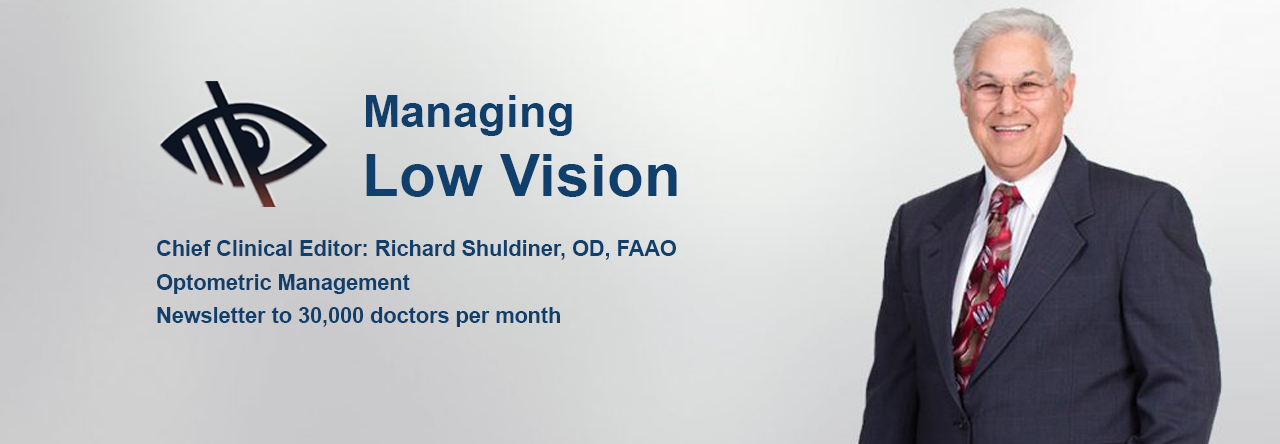By Jeffry Gerson, OD, FAAO with Richard J. Shuldiner, OD, FAAO
Although I do not practice low vision any longer in my private practice, I still have the great honor and privilege of providing low vision services at the Kansas State School for the Blind. By the way, the name of the school includes the word blind, yet the vast majority of the students are not blind, or even legally blind. The name would maybe be more apropos if it mentioned visually impaired instead of blind. Through this great institution, as well as local schools, students receive help from teachers of the visually impaired, orientation and mobility instructors, and many others.
When I was first asked to go and see kids at the school, I wondered if I would enjoy it or if I could even provide any real service. I was quite hesitant to accept this once a month assignment. Looking back, it should have been an easy decision!
Some of the kids I see are legally blind and some even live during the school week in the dorm on campus. However, most see better than 20/200 and live at home. The causes of the vision problems range from retinopathy of prematurity to retinitis pigmentosa to congenital glaucoma or albinism to something called CVI (cortical visual impairment). Many show no outward appearance of being visually impaired. Many of the kids actually go to their “home” school and receive services through their “home” district and visit the school on occasion.
Some of the kids are cane users, due to their limited vision, and some learn to use a cane because they have progressive eye diseases. Where I come in is helping to determine if any low vision devices would be beneficial. Both optical and non-optical devices are tried to see if they will help the student at school, home, and/or in the community. Most of the students use some type of magnification and often utilize more than one device. These clinics are collaborative in nature, so I am often asked questions by the students, their families, and their educational team and do my best to explain their visual functioning.
Many of the students know how to read and write braille, as many have vision that prevents them from reading materials even with a CCTV. The school participates in the “National Braille Challenge”. This is a sight to behold (no pun intended). Many children from around the state descend on the school annually for this event to celebrate their use of braille. Some are absolute masters, and some are just beginners. All are proud of their abilities. As a matter of fact, this year we took my 9 year-old son, who has “normal” vision, to this event. It was a great opportunity for him to see how other kids learn and read. He and my wife were both incredibly inspired by what these kids are able to do!
We think of these kids living in a “different world”. But we all live in the same place—we just experience it a little differently. These kids are able to experience most of the same things any other child does, but using their senses, especially their eyes, a little differently. And, most of this is available to them only after somebody identifies them as having vision problems and referring them to a low vision specialist. Many of the kids are identified through a routine eye exam where something “just isn’t right” and the eye doctor (OD or MD) gets them into the right hands not only for diagnosis, but for real help with low vision and services through school.
If you live in an area with a state school for the blind or similar facility, I would encourage you to go and see what it is all about. Even if not to provide services, just to see these kids will put a smile on your face and help realize the vital importance low vision plays!
After experiencing this, you will never again say “NOTHING MORE CAN BE DONE” to any visually impaired patient, young or old.


